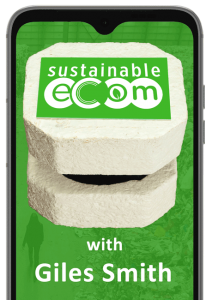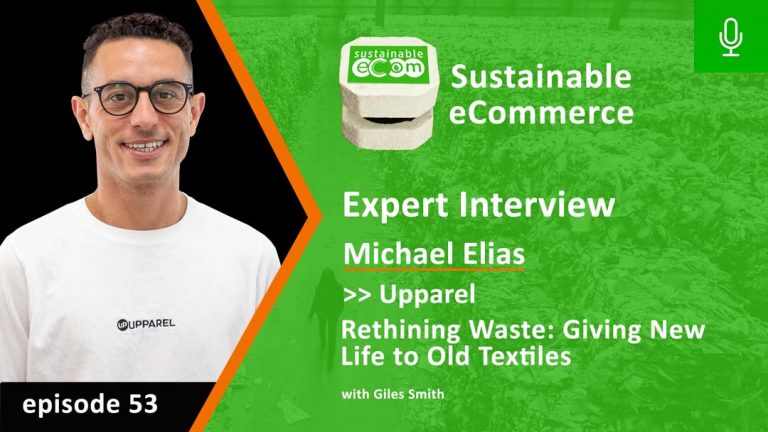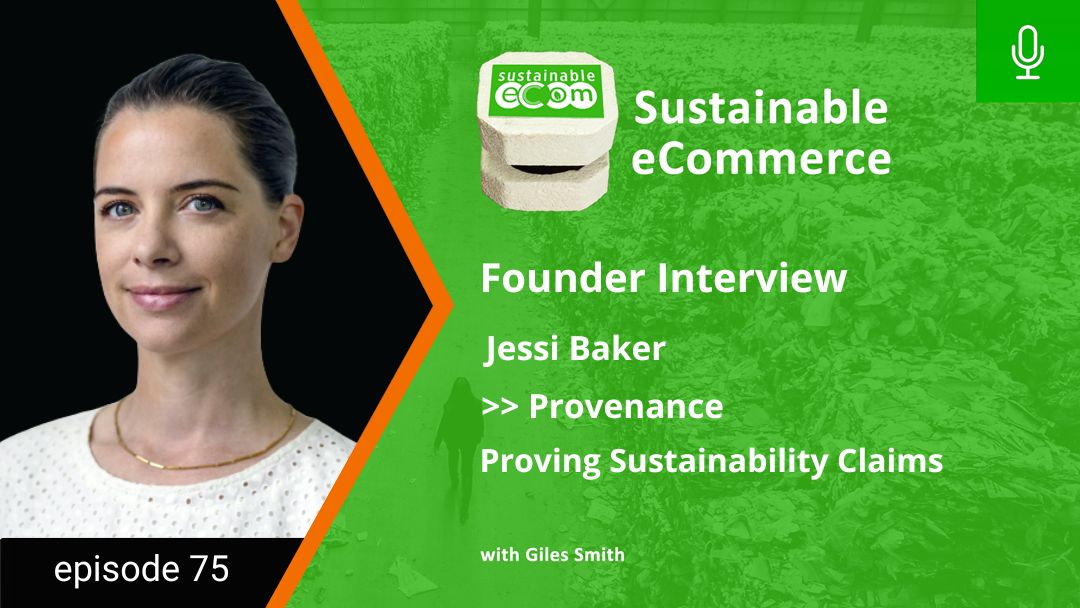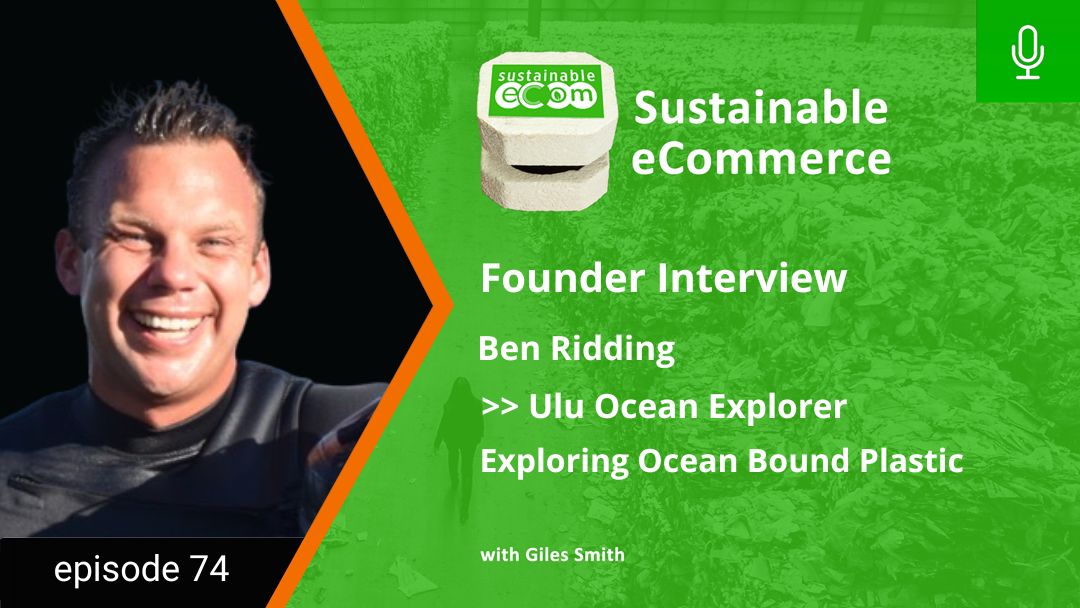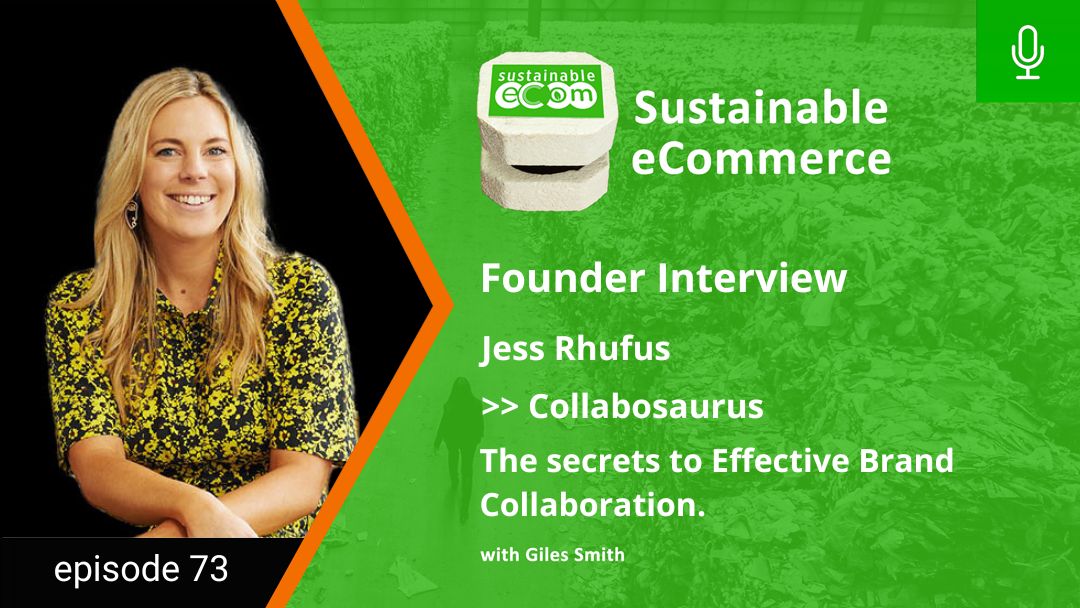EP53 - Sustainable Ecommerce Podcast
Today’s show is the second episode in our mini-series on rethinking waste, and we turn our focus from plastic to mechanically recycled textiles, taking a look at the downstream uses for the recycled textiles and how you can get involved.
Now you may be aware of some of the alarming statistics of this already, but the average Australian throws out 23KG of textiles per year, giving us the dubious honour or being the second largest consumer of textiles per capita in the world, behind the US.
And if you sum those number up, with 26.3 Million people in Australia, that adds up to something like 604 million KG of textile waste every year.
Clearly, as brands we need and responsibility to change this equation!
So to help on that path, my guest today is Michael Elias, founder of Upparel.
As you’ll hear, the demand for domestic recycling of textiles here in Australia has enabled Michael to transition from ecommerce brand selling subscription socks to Australia’s largest mechanical textile recycler, in just a couple of years.
A little like Plastic Bank that we spoke to last week on the show, Upparel have a strong focus on transparency and traceability when it comes to knowing exactly what your brand is recycling, and where that recycled material ends up.
Perhaps most relevantly for the topic of this series, one of the most exciting parts of Upparel’s ecosystem is how they’re constantly innovating and working with downstream partners to rethink ‘waste textiles’ as a resource, replacing other virgin materials in a range of products from the fillers in boxing bags to home insulation.
That means that whether your waste problem related to overstock, returns, deadstock, post consumer product or even staff uniforms, Upparel has a solution to help you keep material out of landfill.
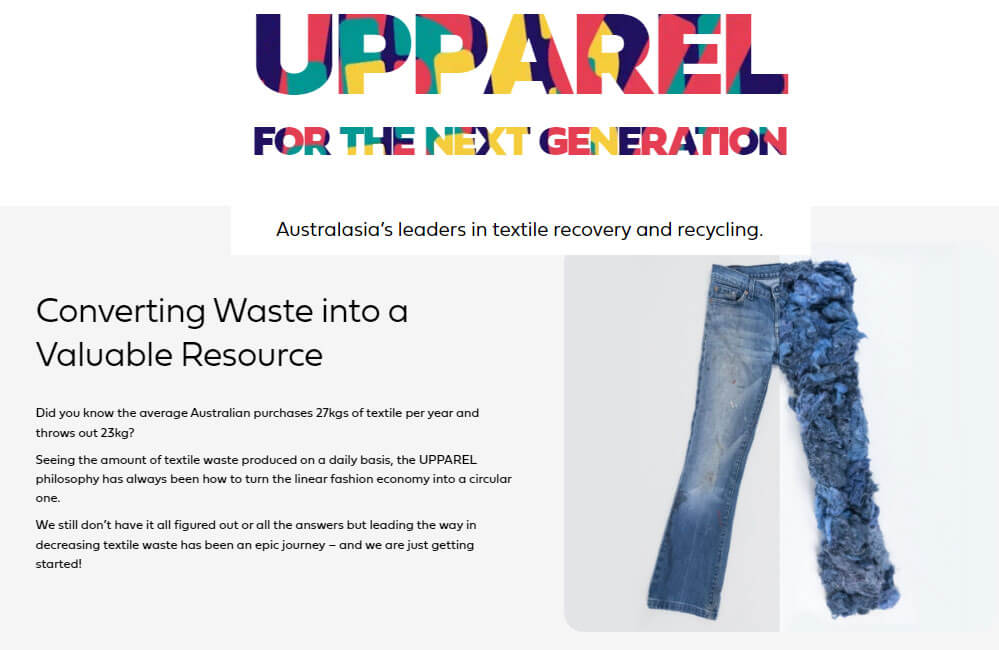
About Michael Elias
Michael spent over a decade working in finances at the ANZ. While working in the corporate environment, the suit trend moved away from wearing ties, and Michael began to wear colourful socks to bring life to an otherwise mundane outfit. Seeing an opportunity to meet the trend with better quality socks, Michael and wife Tina started up Manrags in 2015.
Manrags was one of the world's first sock brands to leverage a subscription service across 70 countries, winning various awards.
How did Manrags turn into Upparel?
A few years after starting Man Rags, Michael started to notice people dropping off subscriptions as they had more than enough socks.
He realised that the brand was not taking responsibility for their products, which meant they were all destined for landfill.
They developed a recycling capability to be able to offer product take back for Manrag's customers. Pretty soon they expanded that out to other fabrics.
Several other brands heard about what they were doing and asked to have access to that capability.
The business really involved into a recycling service when Michael realised that they could easily white label it for other brands, and got significant scale when opening up to take back not just a brand's products but also things like uniforms.
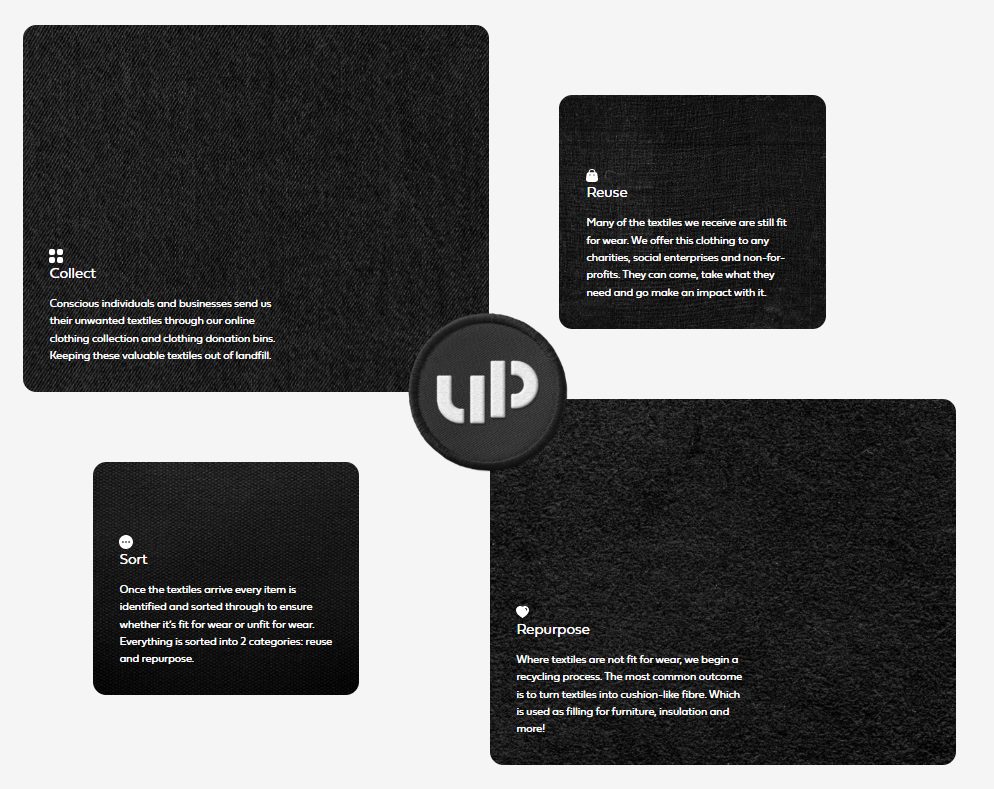
What are some of the challenges you've faced while building Upparel?
One of the biggest challenges has been the commercial viability of logistics, especially domestic collections. Two years ago when Upparel started, they were able to charge a flat fee of $25 per box, which included the cost of shipping, sorting and processing. Initially it cost about $14 per box in logistics, but now it is something like $22, so there is extreme pressure on that service.
Another challenge that has evolved over time is the type of materials and products they can accept. For example they discovered that pleather, breaks down during recycling and contaminates other materials. They also have to be careful about things like handbags and rucksack because the cost and time to take them apart for processing is too great.
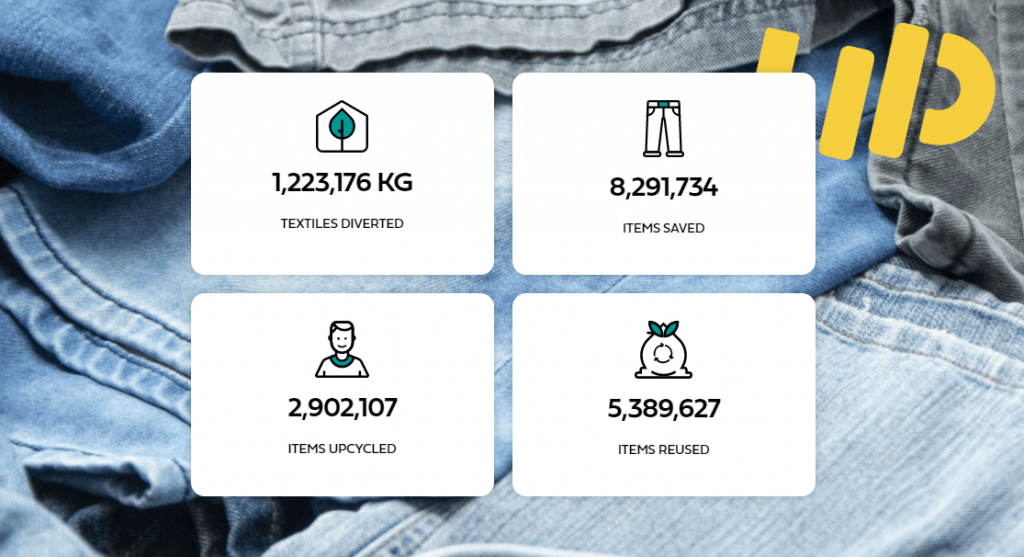
What does Upparel do?
Upparel is Australia's largest mechanical recycler of textiles, fabric and clothing. They can accept just about any fabrics or garments from sheets to uniforms. Clothing is sorted into streams based on material, as well as quality level.
Where items can be reused or donated to charity shops etc, the opinion is that reuse is always better than recycling.
Upparel have agreements with all their charity partners that items can always be returned if not suitable, and that no items will be sent to landfill that came from Upparel.
Certain brands prefer their items not to be made available to charity, and in those cases the items can be recycled or their labels removed.
Items to be recycled are split by material and shredded into fibre. That fibre can then me used as a replacement filler in a variety of products, typically where foam filler would be used.
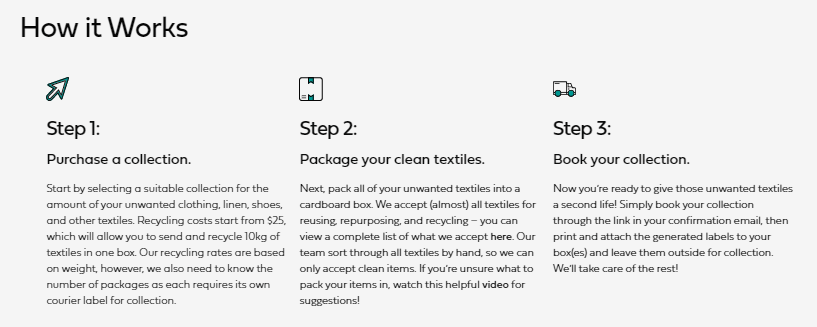
What are the downstream uses for the recycled fibre?
Recycled fibre can be used to substitute virgin material that is often imported, typically plastic foams.
For example, it can be used as filler in things like boxing bags, cushions, furniture padding, home insulation products etc.
Demand for this filler actually currently exceeds Upparels supply capability by at least double, which means that the recycled material doesn't dill up storage spaces!
Not all items are recycled by Upparel even if they can't be reused. Upparel see themselves as just a part of the solution, so they work with partners like chemical recyclers Blocktexx and shoe recyclers Save Our Soles.
How does Upparel engage with brands?
Basically there are two ways. Many brands with a physical location will keep Upparel branded collection boxes on site for customers to bring back used items to be recycled as part of their product stewardship programmes. This enables the brands to keep control of the customer relationship, and incentives consumers to return products at end of life.
Many brands also have waste fabrics from production or in house operations. That might include things like faulty items, old stock, returns, cardstock or uniforms. In this case these items can be sent to Upparel in bulk and charged a gate fee on entry.
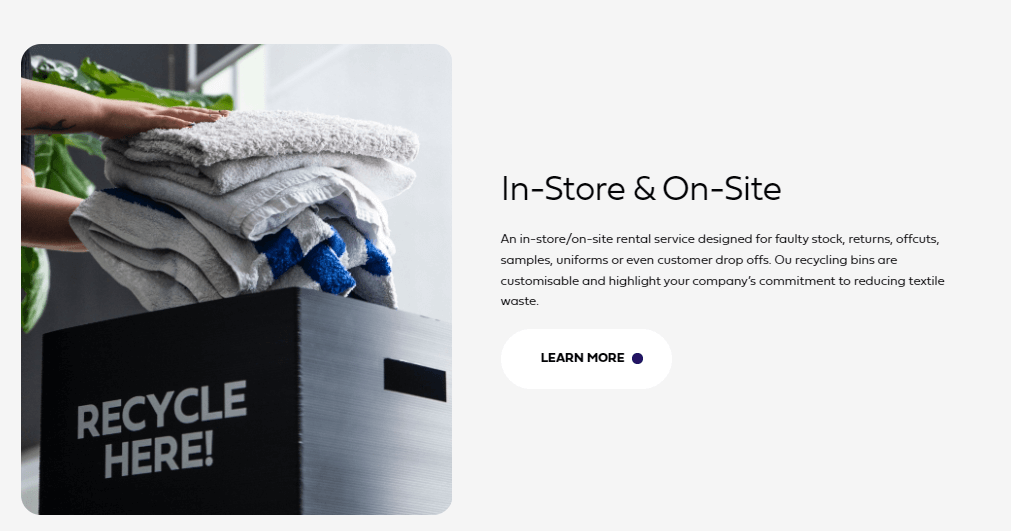
How does Upparel report back to clients?
Most brands want to know exactly what impact their recycling efforts have had for both internal and external communications and tracking. Upparel' s system provides detailed tracking of what has been received and what has happened to the items sent in.
What's next for Upparel
Currently about to invest in new machinery to scale their recycling capability up significantly. In addition they are always looking to ensure robust downstream uses for the recycled material to keep it out if landfill, so are working on a number of products and product partnerships to keep demand ahead of supply.
Top Takeouts
It was interesting to hear just how much the economics of logistics have shifted in a couple of years, such that what was an economically viable $25 pickup service for households 2 years ago is now under serious commercial pressure.
If it wasn’t for the rapid growth in brand partnerships that Upparel has driven and enjoyed, they almost certainly wouldn’t have been able to continue to support that service. Obviously keeping it cheap for the consumer is critical to enabling households to do their part, so I hope they can continue to offer that going forward.
With Upparel, not everything gets shredded, they’re taking I think a strong yet pragmatic approach to high quality items being leveraged by charity organisations. Their view is that reuse is better that recycling.>/p>
That being said, it was also eye opening to learn that their current demand for the recycled fibre products exceeds their current production capability by at least double. That’s a huge confidence boost in the face of the troubles faced by other recycling programmes in the past year.
I also loved the way Michael is seeing Upparel as part of an ecosystem for recycling too, working with chemical recyclers like BlockTexx, who are in fact my guests in next week’s show.
I think the biggest take out for me is just the inspiring growth in demand for domestic recycling of textiles from businesses and brands. It has become the done thing to recycle rather than landfill uniforms, overstocks, deadstock, returned items, damaged items, and post-consumer end of life products.
So it’s great to know that if any of these types of potential waste are a consideration for your brand, you can now rethink your processes around that and work with partners like Upparel right here in Australia.





